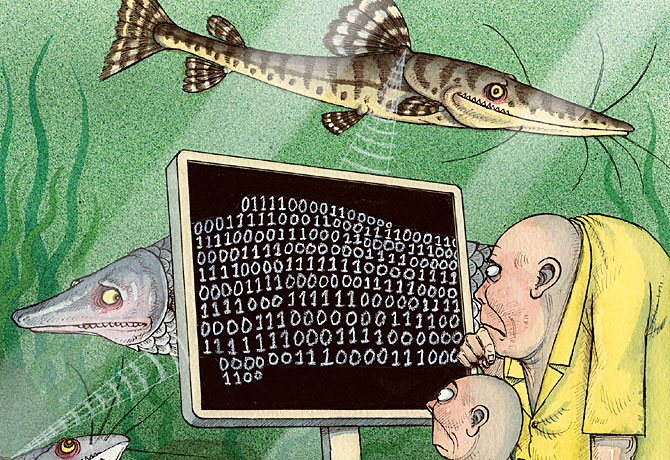
Take one glance at giant tiny at Singapore's Underwater World aquarium, and you'll have no trouble believing that he belongs to a prehistoric fish species, with his protruding lower jaw, sluglike body and shingle-sized scales. The aquarium features the 8-ft.-long (2.5-m-long) beast in its "Living Fossils" tank. But Tiny, an Amazonian arapaima, is also a poster fish for the modern age of technology. His keepers have implanted a radio chip under Tiny's skin, near the dorsal fin, so that when he swims past visitors, he transmits arapaima snippets to nearby display screens. "Can surface above water to breathe in air," reads one. "Capable of leaping out of the water to grab small birds," "oldest fossil is about 140 million years old," and "South American natives use its scales as sandpaper and its tongue as a grater," say the others.
Tiny is one of eight species and 20 fish that the aquarium has outfitted with Texas Instruments RFID (radio frequency identification) semiconductors to help visitors learn more about the creatures they're seeing. "It's part of our mass personalization of the marine animals," says general manager Kwek Meng Tiam. "Each fish has its own unique name, personality and birthday." Tankmates include Tom the walking catfish and Bruce the tiger shovelnose. But the technology isn't the only interactivity. Not only can visitors swim with dolphins there, they can also dive with sharks and dugongs. A 270-ft (83-m) travelator takes people past manta rays and shoals of fish. There are aquarium sleepovers for kids, as well as two- to three-hour workshops in marine life. Underwater World even boasts a Fish Reflexology pool. When visitors step in, Turkish Garra rufa give them a pedicure by nibbling dead skin from their feet. "We're selling an experience," says Kwek. Find out more at www.underwaterworld.com.sg.